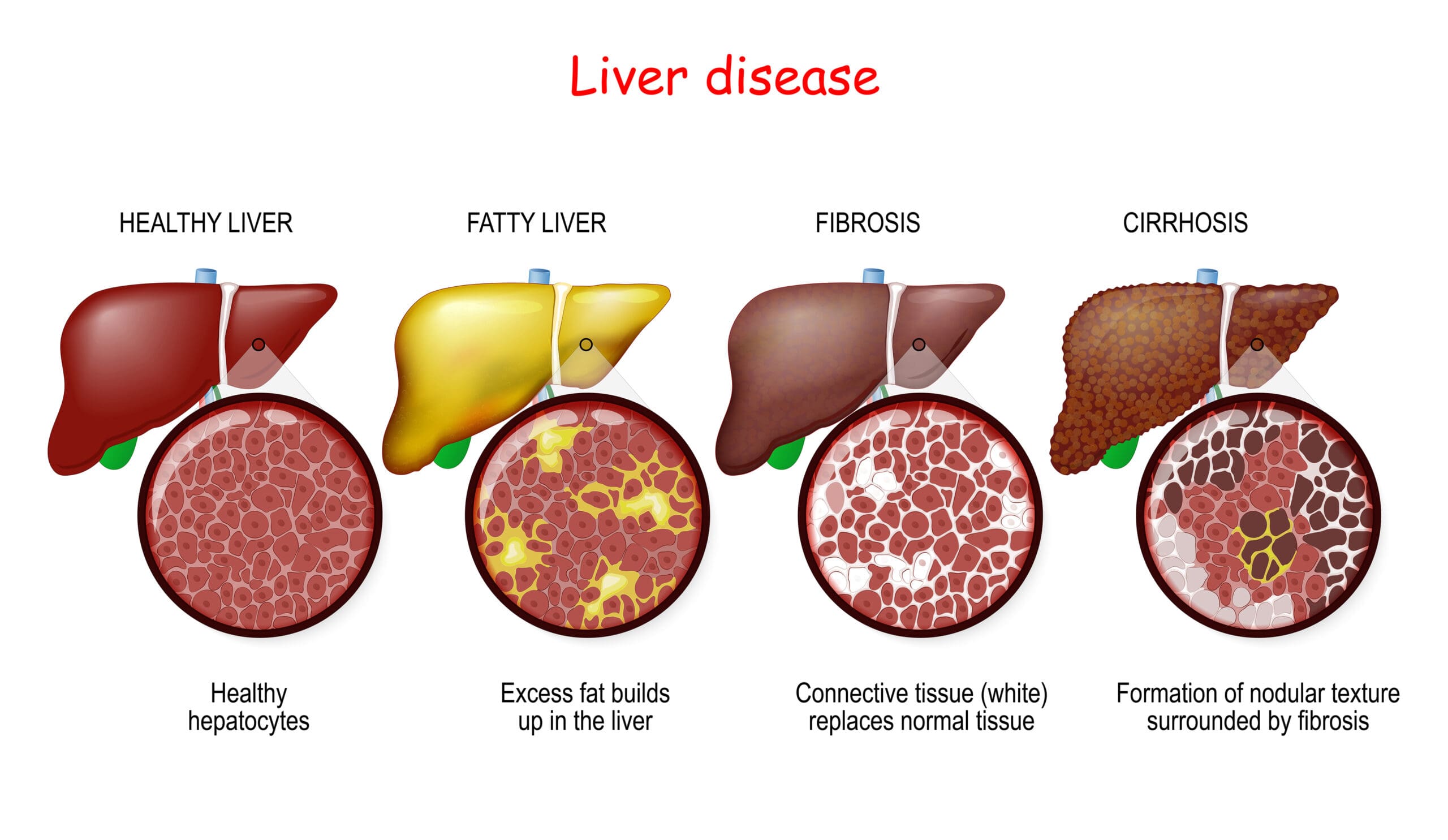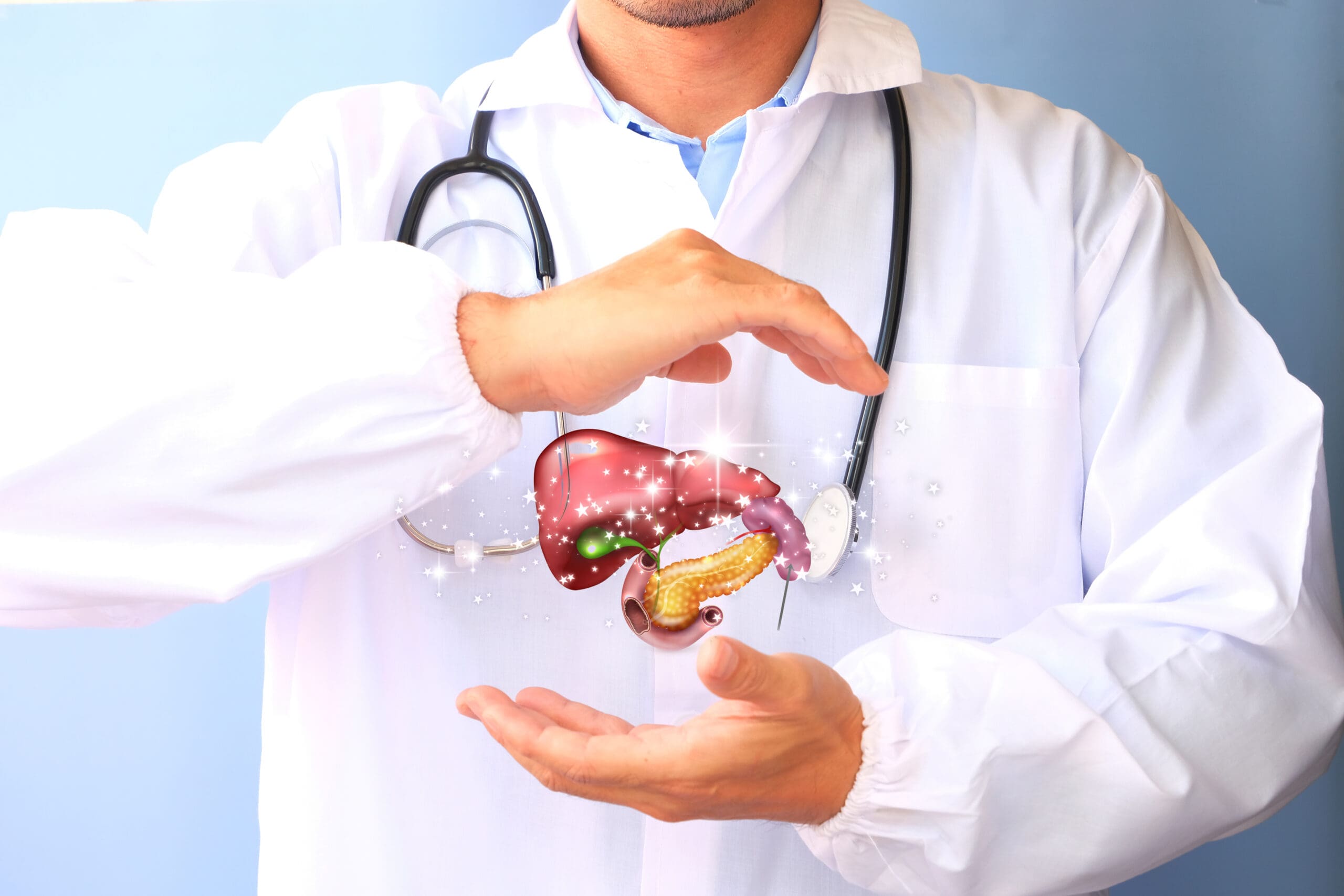Fatty liver now affects one in three Australians
By naturopath Margaret Jasinska
Approximately 2500 Australians die from fatty liver disease each year and this figure is set to soar. Fatty liver occurs when excess fat accumulates inside liver cells. This means normal, healthy liver tissue becomes partly replaced with fatty tissue. The fat starts to invade the liver, gradually infiltrating the healthy liver areas, so that less and less healthy liver tissue remains.
The fatty liver has a yellow greasy appearance and is often enlarged and swollen with fat. This fatty infiltration slows down the metabolism of body fat stores, which means that the liver burns fat less efficiently, resulting in weight gain and inability to lose weight. However some people can have a fatty liver without being overweight. They are often people with polycystic ovarian syndrome, insulin resistance or a family history of type 2 diabetes.
The problem is, around 90 to 95 percent of people with a fatty liver don’t get any symptoms, so they don’t even know they have one. This is a major problem, because sometimes once it’s detected, significant damage has already occurred to the liver. In some cases fatty liver can lead to liver cancer, cirrhosis or liver failure. There is also a strong association with fatty liver and cardiovascular disease and type 2 diabetes.

How would you know if you have a fatty liver?
Most people with a fatty liver feel generally unwell, and find they are becoming increasingly fatigued and overweight for no apparent reason. They may have elevated liver enzymes on a blood test for liver function. Fatty liver is diagnosed with a blood test and liver ultrasound scan.
Possible symptoms of fatty liver include:
- Weight excess in the abdominal area
- Inability to lose weight
- Elevated cholesterol and/or triglyceride levels
- Fatigue
- Nausea and/or indigestion
- Overheating of the body
- Excessive sweating
- Red itchy eyes
- Discomfort over the liver area
If you have never had a blood test for your liver, please ask your doctor for a liver function test. This is a very useful blood test that gives us a lot of information about the state of your liver. Fatty liver is something that once only occurred in people over the age of 50, but we’re now seeing it in teenagers and children. Tragically, an increasing number of people are requiring liver transplantation as a last resort to save their lives. This was the case for 63 year old John Hatty, who you can read about here.
According to Associate Professor Paul Gow, a senior liver specialist at the Austin Hospital, “about 5-10 per cent of people experience potentially fatal consequences of it, including cirrhosis, cancer and liver failure. The trouble is, by the time you have these problems, it’s usually too late. The only treatment is a transplant, and you may not qualify for the procedure or receive a donation in time. The disease can be diagnosed by a blood test which sometimes leads to an ultrasound and biopsy.”
Fortunately, if detected early, the vast majority of fatty liver cases can be entirely reversed. If you need more information on how to do that, please see the book Fatty Liver: You Can Reverse It.









Thanks Margaret
Great information
We are about to do our second Sandra Cabot Liver Cleanse. The first one was very beneficial for us both
but especially for my husband by lowering his fasting blood sugar levels